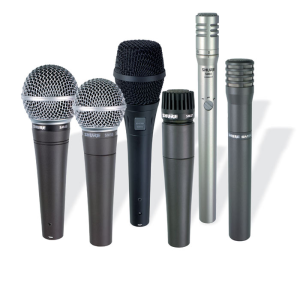 We all attend events where speakers use microphones and more often than not— especially during panel discussions—one or more speakers aren’t being heard well. So this month’s tips are dedicated to all who must use a microphone at least once in their life, whether a handheld or a label mic.
We all attend events where speakers use microphones and more often than not— especially during panel discussions—one or more speakers aren’t being heard well. So this month’s tips are dedicated to all who must use a microphone at least once in their life, whether a handheld or a label mic.
1. Arrive early. This way you can check out and test the type of microphone you’ll be using. To check the mic, never blow, touch, or tap on it. Regrettably this is done all too often in life and in movies. These are the worst things you can ever do to a microphone because you can damage it. Instead, simply begin speaking and within two words you’ll know if it is turned on. Also never say “testing 1-2-3.” How about simply saying “Hello, good morning.” The audience doesn’t need to hear “Is this working?” either.
Determine what type of microphone you are using. Depending on which, there are a few subtleties to know about as described below.
2. Hold a handheld mic just in front of your mouth. Practice this at home. Hold a pen in front of your mouth, about 1 to at most 2 inches away. Now notice whether you need to speak to the top or side of your mic. When using a top speaking mic, hold it with the top part facing your mouth as though you are about to eat its head off. When using a side mic, hold it just in front of your mouth, more like kissing the mic. Practicing holding that pen in front of you for several minutes while reading or saying something aloud.
3. Position a stand microphone level with your mouth. Whether standing or sitting, positioning and angling the microphone for your correct height is critical to being heard well. Position the microphone directly in front of your mouth (whether a top or side mic) as you lean forward to speak. If there is a technician, ask that person to help adjust the microphone for you. They’re the experts.
4. Move the mic when you move your head. When you want to turn your head to face other parts of the audience, you must move your microphone wherever your mouth goes. It must always move as one unit with your mouth. There’s nothing worse than to watch speakers turn their heads away from the mic, which then loses sound quality. Practice this with the pen at home as well.
5. Turn your entire body when using a mic on a stand. For a floor standing mic, the best way to maintain sound quality is to turn your entire body. Take one tiny step to the side toward the direction you want to face, while still maintaining that 1-inch distance from the mic. For a table top standing mic, turn your head and mouth in such a way so the microphone is still in front of you, 1 inch away.
6. Ignore what broadcasters do. We have all seen broadcasters holding their microphones far below their chin at chest and waist levels. These are specialized microphones that allow for such distance. When they point a microphone towards another speaker, though, it’s always held with the top of the mic facing the speaker’s mouth.
7. Wireless lapel microphones have their pros and cons. As great as these devices are to help a speaker to move around more freely, they have advantages and disadvantages. The main advantage is that your hands are free. The drawback is that a lapel mic is very sensitive to movement. The slightest brushing of your clothes can cause unwanted noise and terrible feedback. Also, unless it is set at a reasonable volume, the lapel mic does not follow your mouth when you turn your head and the quality of sound deteriorates. I have practiced raising and lowering my voice when I’m turned away from the lapel mic, which helps to maintain the quality of my voice when turning my head.
8. Do not hold a handheld microphone downward. Letting it hang down often causes ear-splitting feedback and sounds. Keep the microphone upright with your arm bent close to your body. This way you can bring that mic back up to your mouth easily and quickly.
I hope this list has helped you be more confident when using a microphone. If you know of other helpful tips, please share them below.
Happy Practicing!

Hello Syndi Seid,
Thank you very very much for this very informative and helpful information you have shared with us. I will share it with my ESL student, as an learning tid bit and read it to him.
Warmest Wishes to you,
Linda Sanchez.